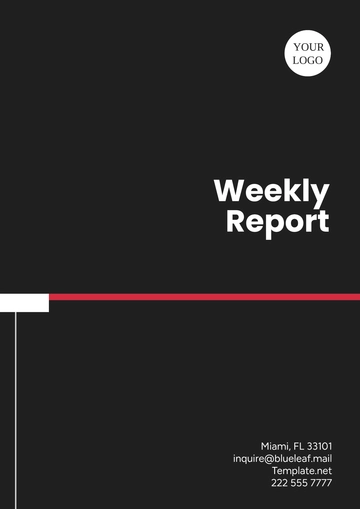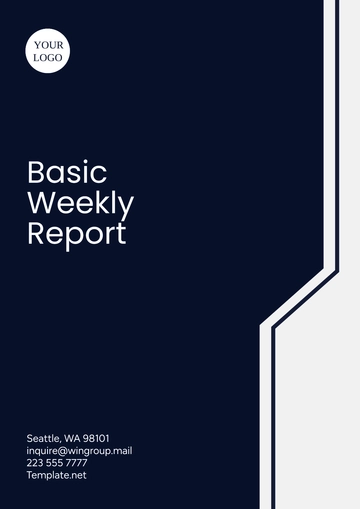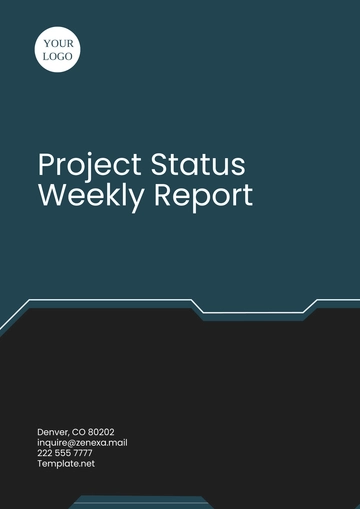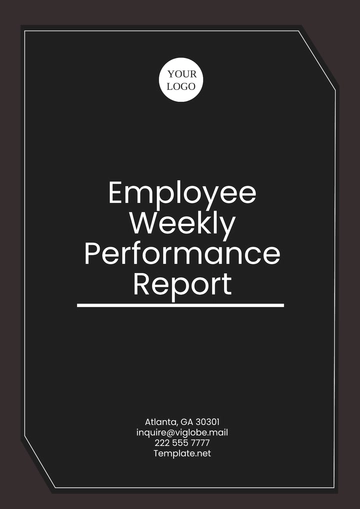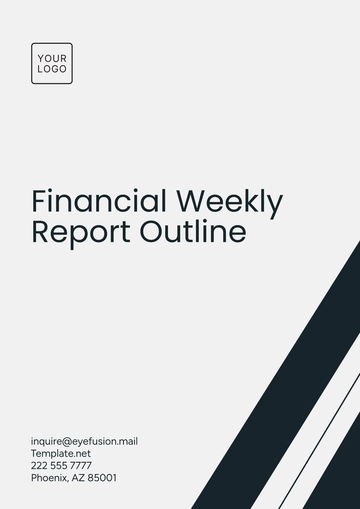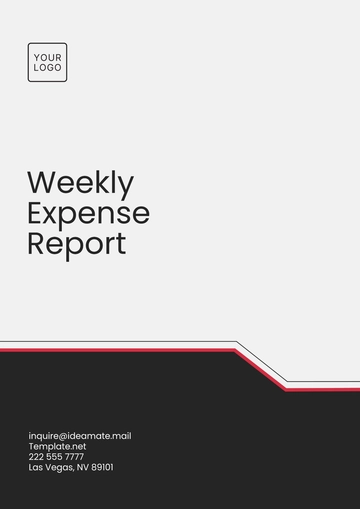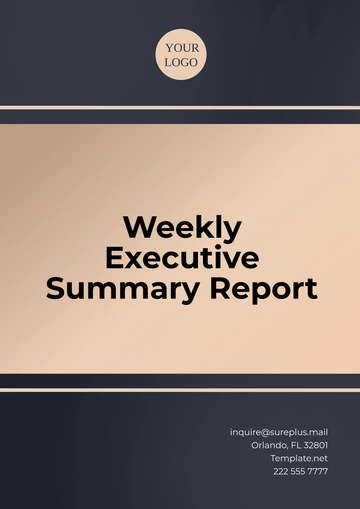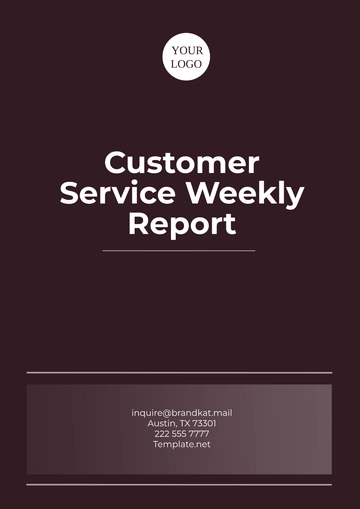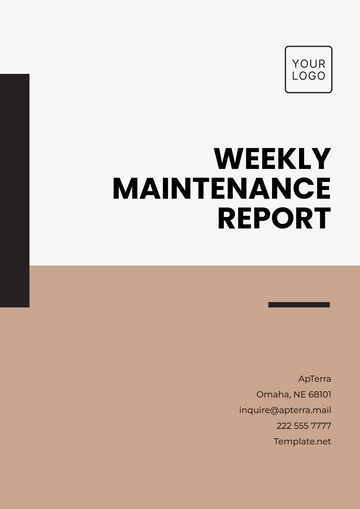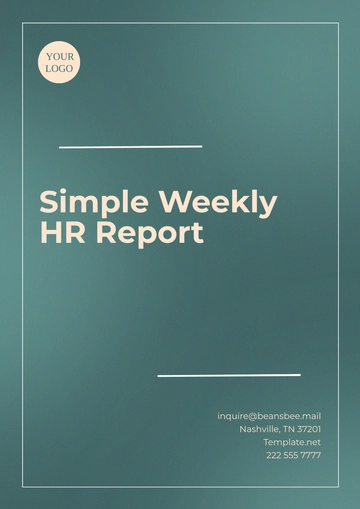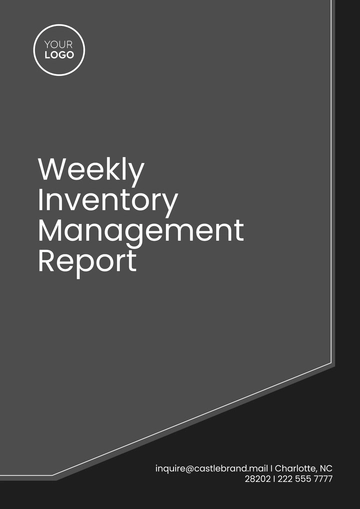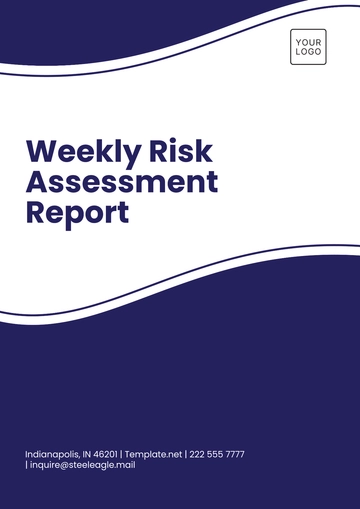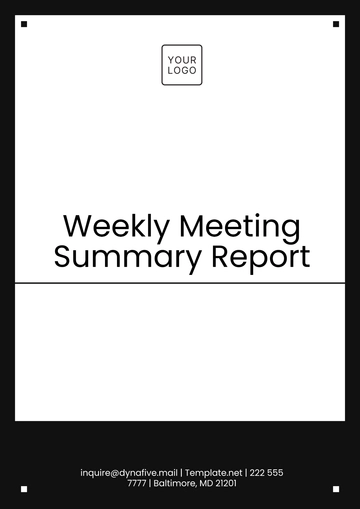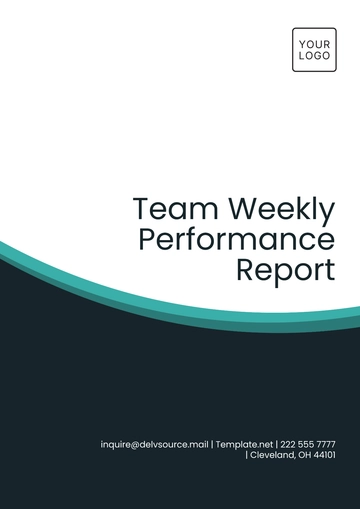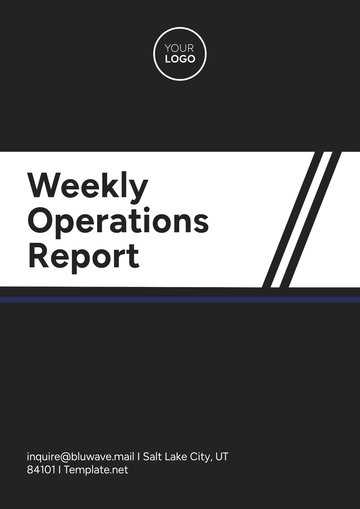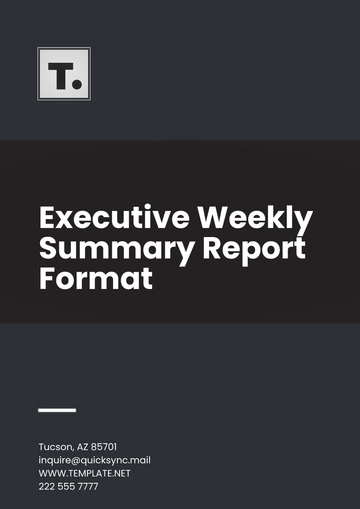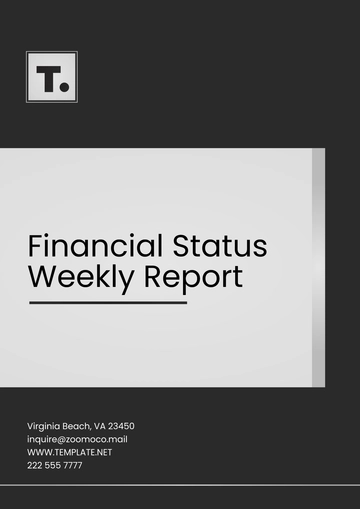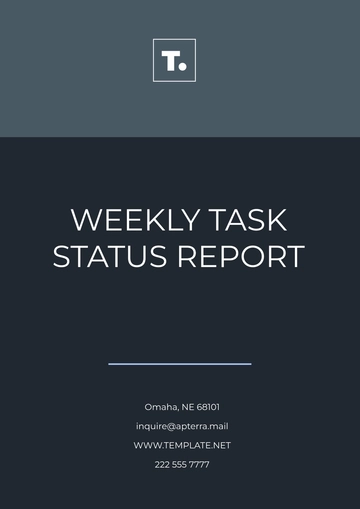Free Financial Weekly Report Outline
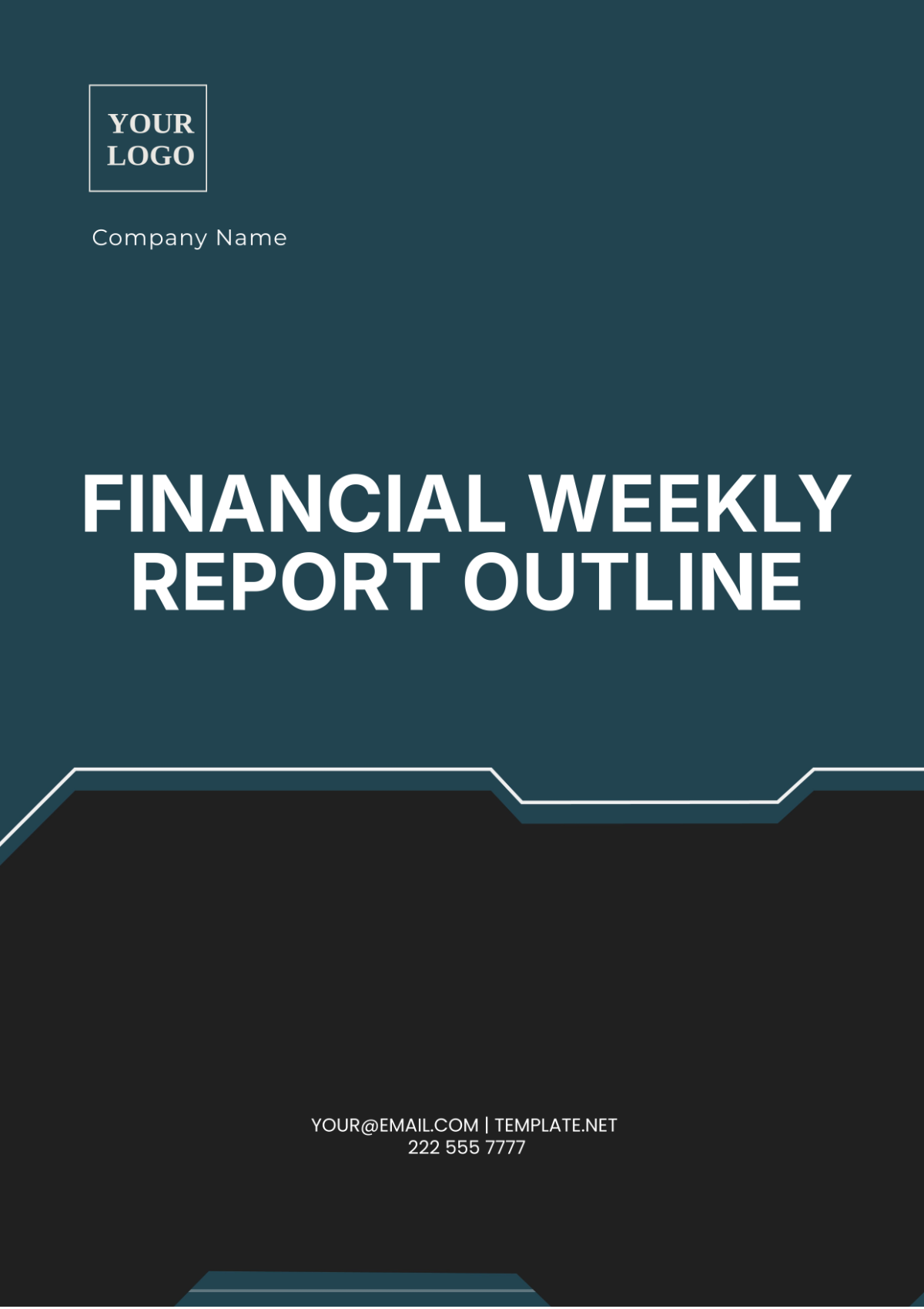
1. Executive Summary
Overview: Brief summary of key financial activities and overall performance.
Key Highlights: Highlight key events, performance gains, or setbacks.
Recommendations: High-level suggestions or actions based on the week’s financial data.
2. Revenue and Sales Performance
Total Revenue: Summary of weekly revenue performance compared to previous periods (weekly, monthly, YTD).
Breakdown by Segment/Product/Region:
Segment A: Sales and growth trends.
Segment B: Sales and growth trends.
Region/Location-specific sales performance (if relevant).
Sales Pipeline Update: Key deals closed, pipeline health, and any upcoming revenue opportunities.
3. Cost and Expense Analysis
Total Operating Costs: Overview of weekly operating expenses.
Cost Breakdown: Key expense categories (e.g., marketing, R&D, personnel, etc.).
Cost vs. Budget: Variance analysis between actual expenses and budgeted or forecasted amounts.
Notable Increases/Decreases: Highlight any significant fluctuations in costs.
4. Profitability Metrics
Gross Profit Margin: Gross profit comparison with prior periods.
Net Income/Profit: Overview of net profitability.
EBITDA: Summary of earnings before interest, taxes, depreciation, and amortization.
Profit Margin Trends: Weekly profit margin performance.
5. Cash Flow and Liquidity
Cash Flow Summary:
Cash Inflows: Sources and amount of cash received.
Cash Outflows: Major categories of cash expenditure.
Net Cash Flow: Comparison of inflows vs. outflows.
Cash Reserves: Current cash and equivalents position.
Liquidity Ratios: Current and quick ratios (if relevant).
6. Balance Sheet Overview
Assets: Overview of current and fixed assets.
Liabilities: Summary of current and long-term liabilities.
Equity: Owner's equity and any changes during the week.
Key Ratios: Debt-to-equity, return on assets, etc.
7. Financial Ratios and Metrics
Current Ratio: Analysis of liquidity position.
Return on Equity (ROE): Measurement of profitability relative to equity.
Debt-to-Equity Ratio: Analysis of leverage.
Key Performance Indicators (KPIs): Industry-specific financial ratios.
8. Budget vs. Actual Performance
Revenue Variance: Comparison of actual revenue vs. budgeted revenue.
Expense Variance: Analysis of actual vs. planned expenses.
Forecast Update: Revised forecast based on current performance.
9. Key Operational Updates
Operational Efficiencies: Any productivity improvements or inefficiencies.
Headcount/HR Updates: Summary of staffing changes or personnel costs.
Other Operational Costs: Non-financial developments impacting expenses.
10. Major Projects and Capital Expenditures
Project Updates: Status of any major ongoing projects or capital investments.
CapEx Analysis: Summary of capital expenditures incurred during the week.
11. Risks and Issues
Current Risks: Financial risks (e.g., market, liquidity, operational risks).
Mitigation Strategies: Actions being taken to manage these risks.
Future Concerns: Any upcoming risks that need monitoring.
12. Conclusion
Summary of Financial Health: Overall assessment of the organization’s financial condition.
Next Steps: Immediate actions or adjustments to focus on in the following week.
Forecast Outlook: Expectations for future performance and key upcoming dates.
- 100% Customizable, free editor
- Access 1 Million+ Templates, photo’s & graphics
- Download or share as a template
- Click and replace photos, graphics, text, backgrounds
- Resize, crop, AI write & more
- Access advanced editor
Discover the Financial Weekly Report Template from Template.net—your key to streamlined financial reporting. This editable and customizable template is designed for precision and ease. Edit directly in our Ai Editor Tool to tailor your reports effortlessly, ensuring clarity and professionalism in every update. Elevate your financial insights today!
You may also like
- Sales Report
- Daily Report
- Project Report
- Business Report
- Weekly Report
- Incident Report
- Annual Report
- Report Layout
- Report Design
- Progress Report
- Marketing Report
- Company Report
- Monthly Report
- Audit Report
- Status Report
- School Report
- Reports Hr
- Management Report
- Project Status Report
- Handover Report
- Health And Safety Report
- Restaurant Report
- Construction Report
- Research Report
- Evaluation Report
- Investigation Report
- Employee Report
- Advertising Report
- Weekly Status Report
- Project Management Report
- Finance Report
- Service Report
- Technical Report
- Meeting Report
- Quarterly Report
- Inspection Report
- Medical Report
- Test Report
- Summary Report
- Inventory Report
- Valuation Report
- Operations Report
- Payroll Report
- Training Report
- Job Report
- Case Report
- Performance Report
- Board Report
- Internal Audit Report
- Student Report
- Monthly Management Report
- Small Business Report
- Accident Report
- Call Center Report
- Activity Report
- IT and Software Report
- Internship Report
- Visit Report
- Product Report
- Book Report
- Property Report
- Recruitment Report
- University Report
- Event Report
- SEO Report
- Conference Report
- Narrative Report
- Nursing Home Report
- Preschool Report
- Call Report
- Customer Report
- Employee Incident Report
- Accomplishment Report
- Social Media Report
- Work From Home Report
- Security Report
- Damage Report
- Quality Report
- Internal Report
- Nurse Report
- Real Estate Report
- Hotel Report
- Equipment Report
- Credit Report
- Field Report
- Non Profit Report
- Maintenance Report
- News Report
- Survey Report
- Executive Report
- Law Firm Report
- Advertising Agency Report
- Interior Design Report
- Travel Agency Report
- Stock Report
- Salon Report
- Bug Report
- Workplace Report
- Action Report
- Investor Report
- Cleaning Services Report
- Consulting Report
- Freelancer Report
- Site Visit Report
- Trip Report
- Classroom Observation Report
- Vehicle Report
- Final Report
- Software Report
